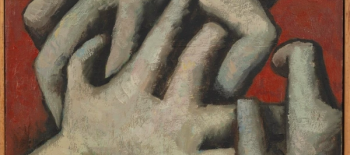L’art difficile de filmer la danse. “Between classicism and experimentation : dance film in Poland in the 1970s”

The International Dance Film Festival – The Difficult Art of Filming Dance focuses on the specific relationship between dance and film. The selection of recent films includes films and documentaries by directors, choreographers and visual artists made in the two years preceding the festival.
For the historical films, a new theme is chosen every year. The one of 2021 honors Poland and we invite you to discover the content below.
The program dedicated to Polish films will take place
@ Cinematek (Rue Baron Horta 9)
Friday 1st October 2021
from 5 pm
Full programme here.
Session at 17h
The Polish film session opens with the silent melodrama “Bestia /The Beast/ The Polish Dancer” with Pola Negri, directed in 1917 by Alexander Hertz.
Session at 19h
‘Between classicism and experimentation’ : dance film in Poland in the 1970s
is the first program addressing the mutual inspirations of Polish avant-garde film and dance at the time. Seven shorts selected for the program showcase diverse approaches to the exploration of dance and movement through the film medium, from documentaries to formal experiments in video-art and animated film.
Krzysztof Kieślowski’s “Siedem kobiet w różnym wieku” / “Seven Women of Different Ages” is a reportage portrait of seven dancers at different stages of a typical ballet career, and a metaphorical representation of a specific way of life, informed by art. In conveying the tension between the dancers’ individual and universal traits, the film resembles a parable in which every word and frame is loaded with significance, combining into a miniature masterpiece.
The program also features recordings of choreographies by the pioneers of dance theater in Poland, in which the camera and editing engage in active dialogue with movement. Widely considered as an iconic piece in the repertoire of the Polish Dance Theater – Poznań Ballet at the time, the neoclassical “Adagio” choreographed by Conrad Drzewiecki was captured on film by Grzegorz Lasota, who took it to another compositional level for the screen. In turn, Janina Jarzynówna-Sobczak’s choreography “Duet miłosny” / “Love Duet” filmed by documentalist Jadwiga Żukowska is a bold and subversive interplay with framing and perspective.
The program also recognizes the Polish experimental film tradition. From a present-day dance perspective, one is prompted to reinterpret the relations between respective film elements and broadly defined movement (including that of the camera). Interpreting a given piece as a dance film may be independent from its form or genre, as it is defined by the presence of specific compositional features (e.g. those related to video or sound editing) rather than the filmed activity.
Józef Robakowski’s “Idę” / “I’m going…” may serve as a case in point. Produced in the era of the Workshop of the Film Form, this 3-minute, single-shot short captures the Robakowski’s ascent up the 200 stairs of a parachute tower. Attached to the artist’s body, the camera registers random images while also recording his quickening breath and puffy voice, amounting to a mechanical testimony of somatic experience.
In the case of Zbigniew Rybczyński, movement serves as a vantage point for the exploration of technical capacities of the film medium. “Take Five,” Rybczyński’s diploma piece developed at the Łódź Film School, features a peculiar “dance” between two characters who interchangeably come closer to, and draw apart from, each other. Rybczyński directs the viewer’s attention to image by impeccable rhythmization of movement within the frame with video editing to the sound of Dave Brubeck’s iconic piece. The film culminates in an iterative exposition, which was also (albeit to a lesser extent) employed by Rybczyński in “Kwadrat.
The juxtaposition of these two pieces with Rybczyński’s trademark “Tango“, Poland’s first Oscar in the animated film category, shows the evolution of the director’s work in a broader context of avant-garde cinema.
Session at 21h
This program ends with Tadeusz Kantor‘s “The Dead Class” in the film adaptation by Andrzej Wajda. The subject of this film recording is the first version of Tadeusz Kantor’s “The Dead Class”, a séance expressed in cinematic language. In the case of a filmed recording of a performance, the choice of shots, the composition of frames and the rhythms of the editing procedures mean that the question of authorship rarely changes fundamentally, but always becomes more complex. The viewer accesses the theatrical work in a different way, sometimes losing and sometimes gaining something in the process. In the case of the recording of The Dead Class, there was a collaboration of masters, of individuals, that gave the film a unique quality. Despite successive recordings of The Dead Class, the world, forty years later, is still watching that same recording.” A unique recording of Tadeusz Kantor’s performance was made in 1976 by Andrzej Wajda during his presentation at the Krzysztofory Gallery in Krakow.



